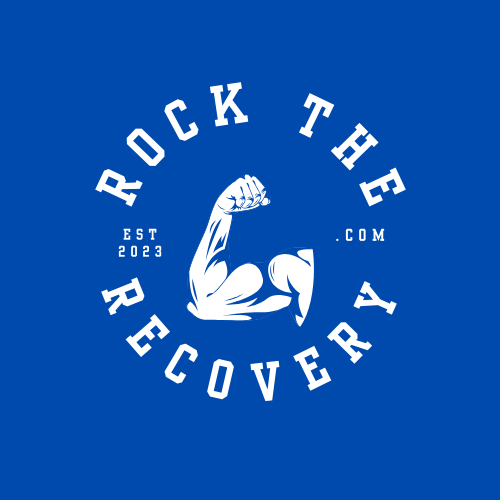For many of us who work in nursing homes the MDS team works behind the scenes out of sight and mind. This stands for minimal data set but is far from minimal work. The team is regularly (at least quarterly) or more performing data analysis on each resident which has significant implications to the nursing home. This information is used for quality measures, as well as reimbursement. So, it is a big deal when the Center for Medicare and Medicaid Services (CMS) completely changes the way these processes will take place.
Quick History:
This all began many years ago however, starting in July of 2018 when the CMS announced the PDPM (Patient Driven Medical Model) of payment, for their Prospective Payment System (PPS). This was used for reimbursement of rehab and long-term care patients being covered under med A coverage. We are all now familiar with the GG section (functional abilities and goals). This assessment is currently part of all of our evaluations and discharges. For PT GG focuses on scoring mobility activities such as transfers, ambulation, WC mobility, bed mobility and so on. For OT of course it is focused more on ADL’s like dressing, bathing, toileting and so on. The different levels to choose from includes:
1- Dependent
2- Substantial/maximal assistance
3- Partial/moderate assistance
4- Supervision or Touching assistance
5 – Set up assistance
6 Independent
As well as other options like Medically unstable, not applicable, refused, environmental barriers.
The intent at the time was to continue on with further implementation that would happen a year later in Oct of 2020 to roll out the PDPM model to Med B patients as well. This was postponed because of Covid, until now.
Back in April of this year, it was announced that major changes were coming to the reporting measures that the MDS team reports to the government. A new version of the Long-Term Care Facility Resident Assessment Instrument 3.0 has come out and would have major implications for those working in Nursing homes, long term care Hospitals and post-acute care facilities.
One important point to make here is that each state takes this information and decides how it will proceed with reporting and ultimately payment for the facilities in that state. Many states follow the new changes, while others are deciding to continue with the older model called optional state assessment; like Connecticut and some 15 other states. Some of the larger states include PA, VA, NC, OH. With only weeks left before October, many states have not come out with final guidance.
Big Picture Changes:
Currently however in many states for long term care/med B residents this type of functional reporting information came from section G (functional status). This was obtained by CNA’s when they do their daily reporting. From their G section reporting, you would hear CNA’s often refer to functional needs as independent/limited/extensive/total dependent assist. This has always been a point of difficulty for Therapists as we would be speaking different terminologies when discussing a resident. However, this will no longer be a problem as their G section of reporting is going away to be replaced by our familiar GG sections.
There are other major changes as well that shouldn’t affect our (Therapists) daily routines including addition of social determinates of health that will look at race/ethnicity, health literacy, effects of social isolation, and availability of transportation. This way the Rehab facilities may better prepare for a successful discharge taking into consideration these attributes. There will be other new changes as well including in medication reporting.
This will require major decisions on, and changes by nursing homes as to the reporting software, training of each CNA. Not to mention, how and when to implement these changes. Also, how other staff like Nurses, Therapists and Nurse Managers assist in the process will soon be decided.
By doing so the CMS is attempting to get everyone speaking the same language. Not only in each facility, but also across the subacute board of care. With everyone reporting the same information, the goal is to amass a large amount of information and statistics to best help to drive healthcare policy in the future. It also is making attempts to better reimburse the facility for the care based on the overall complexity of the patient.
For Therapists who work with Med B patients, our main focus is on the changes to Casemix dates. First, what is (potentially was) Casemix? Reimbursement of Medicaid patients in nursing homes is based on this very MDS reported data. Many patient factors are consolidated and analyzed by the MDS team to place a patient in a certain RUG (resource utilization group) score. These scores have major implications to reimbursement numbers. During MDS reviews of the patient, if Therapy was involved for 5 days in a 7-day period, then it meant significantly better scores. In some cases, if two/or three Therapies could drive the treatment time up. Typical 30-minute treats would account for 150 minutes of treatment, but it could go up from there. 325 or even 500 then again this could mean big financial implications.
With the changes being made as of Oct 1st which are geared more toward the PDPM model approach. Therapies would no longer be captured for Casemix in this way. Because of this States need to make a decision how they plan to transition and when. For a majority of the country however, it could mean no more Casemix!
So, if not through Casemix, how do Therapists bring value to our residents in terms of their MDS reporting? We can greatly affect both our short term and long-term patient quality measures which has sig financial implications for your facility. This can be seen in the value-based purchasing program and quality reporting programs. Homes will be financially impacted by Therapy issues like falls or decline in reported GG functional reporting. For instance, a functional decline documented for your long-term care resident will be a ding on your facility’s report card.
We will now also have what are called “calculated expected outcomes” from CMS for our short-term rehab patients. It will be our job to either match or beat at discharge. By doing so we are demonstrating that we are meeting functional outcomes for a person of that medical complexity. This will be based on your GG scores. Again, with significant implications if your facility is regularly not meeting these standards. The outcome expectation is calculated by a combination of prior level of function, current level of function and other complex information.
Ultimately our facilities will be paid by not so much the number of minutes of Therapy, but instead our outcomes and quality of care we are providing to our patients. This of course will hopefully come with a new approach geared toward giving what is needed to our residents or rehab patients.
I hope this helped clarify this quite confusing aspect of our job and have a better understanding of what is yet to come. Much of the final decision making is still yet to come. Just as in the past, it will take many months to until all of our questions are answered. Try and remain cautiously optimistic, as this could have positive implications for Therapists. The next few months will likely come with growing pains for our friends the CNA’s.
Follow us for more resources on Facebook!

